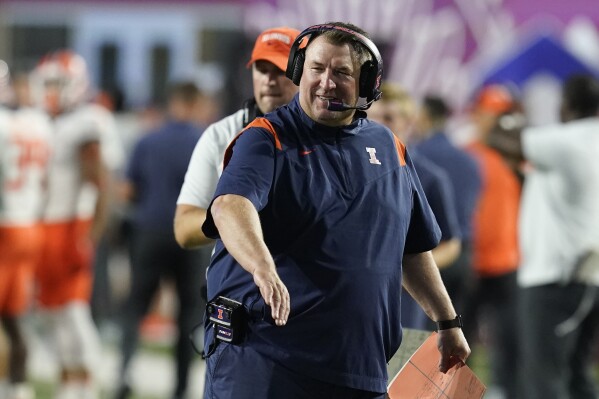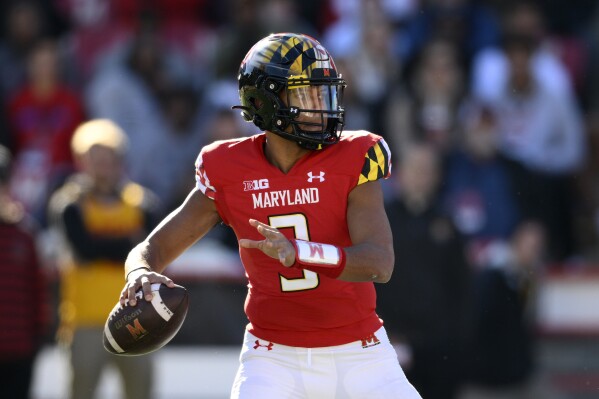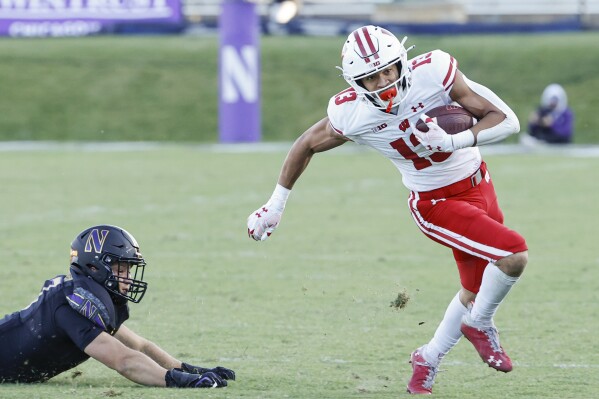Ivy League football coaches praise conference’s stability (and wish they weren’t so alone)
BOSTON (AP) — There’s one college football conference sitting out the reshuffling going on among its big-money brethren: The Ivy League will start the season with the same eight members it has had since it formed in 1956.
“It’s lunacy going on nationally right now,” Brown coach James Perry said on the Ivy League Media Day Zoom on Monday. “This league has always put the student-athlete first, his interests first, making him the best ballplayer he can be while still being a student. … In the changing landscape of college athletics, that’s how you do things right over a very, very long period of time.”
Conference realignment has been going on for decades, but the pace accelerated this year with moves that bulldozed longtime league affiliations and the regional rivalries they fostered. By next season, the traditional Midwestern power Big Ten will have 18 members from UCLA and Southern California on the West Coast to Rutgers and Maryland in the East.
The root of the problem: An influx of TV money for the top programs that pressures rivals to trade up if they want to compete.
 Illinois, fresh off bowl trip and 8-win season, has ‘unfinished business’ as opener draws near
Illinois, fresh off bowl trip and 8-win season, has ‘unfinished business’ as opener draws near
 With an experienced QB in Taulia Tagovailoa, Maryland is aiming higher this season
With an experienced QB in Taulia Tagovailoa, Maryland is aiming higher this season
 New coach and offense have No. 19 Wisconsin eager to return to Big Ten title contention
New coach and offense have No. 19 Wisconsin eager to return to Big Ten title contention
“The financial aspect of it has just taken it right off the rails,” Harvard coach Tim Murphy said. “I think it will get better. But it’s never coming back to the way it was, which is such a shame.”
Although “Ivy League” was previously used as an unofficial designation of eight private liberal arts schools in the Northeast known for elite academics and ivy-covered halls, the group became a formal athletic conference in 1956 with the same eight members it has today: Brown, Cornell, Columbia, Dartmouth, Harvard, Pennsylvania, Princeton and Yale.
The “Ancient Eight” — Harvard and Yale predate the rise of college sports by centuries — don’t offer athletic scholarships, and the institutions also agree to restrictions on admission and eligibility designed to keep the focus on schoolwork rather than sports. Executive Director Robin Harris praised the league’s “model of sustained success” and positioned it as the antidote to the dollar-chasing that has destroyed longtime conference affiliations and many of the regional rivalries that go with them.
“During this time when there is so much uncertainty in college athletics, with realignment and many questioning the path college football and college sports will take,” she said, “I invite you to … take notice of a conference that is rooted in collegiate stability and principle with incredibly talented student-athletes on and off the field.”
While the transfer portal and the NFL draft has made four-year players less common at major college programs, they were the norm in the Ivies. Part of the allure is the degree that comes from one of the top academic institutions in the nation.
And with compact travel, a shorter season and limits on practice (along with restrictions on tackling when they’re there), the Ivy players have a chance to get the education they were promised.
“We’re playing the game the way it was supposed to be played,” said Murphy, who counted three transfers in the 30 years he has been at Harvard. “That speaks to what the Ivy League is all about: being able to be a Division I athlete and get arguably the best education on the planet. So it hasn’t affected us, but there will be a trickle down.”
Murphy said that big college football would actually improve if there was an acknowledgement that it had become a professional sport. At least the NFL has salary caps and a draft to ensure that the best teams don’t just pull farther away from the competition.
“If we were actually operating the way the NFL does, it might be manageable,” he said. “But the way it is right now, the rich are going to get richer.”
Like the Ivy League schools it is consistently ranked among, Stanford promises a top tier academics experience to go with one of the most successful athletic departments in the nation. But it has been left behind by the conference reshuffling in a Pac-12 that is now down to four teams.
Any chance of the Ancient Eight turning into the Newfangled Nine?
“I don’t think that would be in the best interest of Stanford, in all honesty, when you consider the history,” Murphy said. “But we must make sure somehow that we don’t just decimate and leave in our wake schools with that great history, schools that are renowned across the globe, all of a sudden with really no place to go.
“There’s got to be a better way to do it.”
___
AP college football: https://apnews.com/hub/college-football and https://apnews.com/hub/ap-top-25-college-football-poll
Disclaimer: The copyright of this article belongs to the original author. Reposting this article is solely for the purpose of information dissemination and does not constitute any investment advice. If there is any infringement, please contact us immediately. We will make corrections or deletions as necessary. Thank you.



